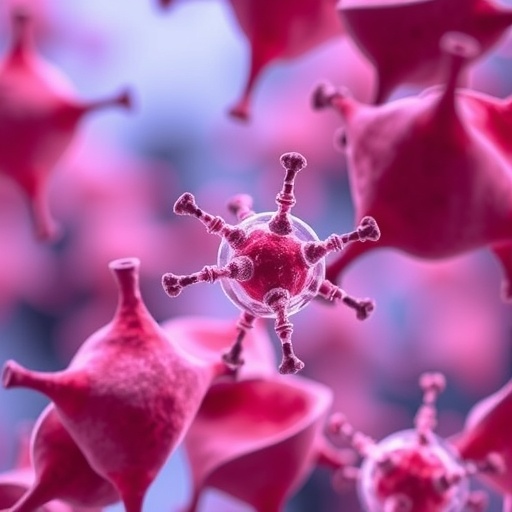Prostate cancer remains a formidable challenge in men’s health, standing as one of the leading causes of cancer-related mortality worldwide. While early-stage diagnoses often yield favorable responses to standard treatments, a significant subset of patients experiences progression to an aggressive and lethal form of the disease. Understanding the cellular and molecular underpinnings that govern this transition is paramount to advancing therapeutic strategies. In a groundbreaking study recently published in the Proceedings of the National Academy of Sciences, a team of researchers from the University of Michigan has charted an unprecedented cellular atlas of prostate cancer using state-of-the-art multiomic technologies, revealing crucial determinants of treatment resistance.
The cornerstone of this research lies in the integration of single-cell RNA sequencing, single-cell multiomics, and spatial transcriptomics—cutting-edge methodologies that collectively map the complex cellular composition, gene expression profiles, and spatial organization within the prostate tumor microenvironment. These approaches enable a resolution previously unattainable in cancer biology, capturing the intricate interplay between diverse cell populations and their dynamic responses to therapeutic intervention. The study particularly focuses on the mechanisms that drive resistance to androgen deprivation therapy (ADT), the frontline treatment for advanced prostate cancer, which unfortunately succumbs to resistance in many patients.
Traditional models, including genetically engineered mice, have provided valuable insights into prostate cancer biology but fall short of representing the full spectrum of human disease progression, especially in the context of therapeutic resistance. Addressing this gap, the researchers employed these advanced single-cell techniques on mouse prostate tissues to dissect cellular heterogeneity and pinpoint the cell types responsible for tumor maintenance and adaptation following castration-mimicking androgen suppression. This comprehensive cellular cartography illuminates how distinct cell populations contribute to the tumor’s resilience and evolution under therapeutic stress.
One of the landmark findings from this research is the identification of over twenty genes whose activity is modulated in response to androgen deprivation. Notably, genes from the AP-1 and Klf families were significantly upregulated, revealing pathways likely involved in cellular stress response and the initiation of regenerative programs within the prostate tissue. Intriguingly, these gene expression patterns were mirrored in human prostate cancer samples from patients exhibiting resistance to androgen deprivation, underscoring the translational relevance of the murine model and the robustness of the cellular atlas produced.
The research team’s multiomic approach also uncovers how androgen deprivation therapy remodeling impacts the cellular ecosystem, reshaping intercellular interactions and signaling networks. This reconfiguration includes the activation of pathways associated with stress management and novel cell development, processes that potentially facilitate tumor cell survival amid a therapeutic assault. Such insights broaden our understanding of prostate cancer’s adaptive strategies and highlight potential vulnerabilities for future targeting.
Furthermore, the spatial transcriptomics data illuminate the precise anatomical contexts of these molecular changes within the prostate. By mapping where specific cell types and gene expression signatures localize, the study paints a vivid picture of tumor architecture and microenvironmental influences. This spatial dimension is crucial for identifying the niches that harbor resistant cancer cells and for designing localized therapeutic interventions that could disrupt these protective environments.
While many protein targets identified through this atlas are traditionally deemed difficult to drug due to their biological roles and molecular characteristics, the research team is actively exploring novel modalities to intervene in these pathways. These include designing molecules that can modulate protein-protein interactions, allosteric inhibitors, or emerging therapeutic platforms such as targeted protein degradation. This forward-looking strategy exemplifies how deep molecular understanding can guide innovative drug development in challenging cancer contexts.
The implications of this study extend beyond the scope of prostate cancer treatment resistance. It establishes a versatile framework for dissecting cellular ecosystems in cancer and other diseases, emphasizing the power of integrating multiomic data with spatial context. This comprehensive approach sets a precedent for future research endeavors seeking to unravel the complexity of tumor biology and therapeutic response at an unprecedented resolution.
The lead investigators emphasize that their work not only reveals the hidden diversity within prostate cell populations but also exposes the cellular programs that empower tumor survival against one of the most effective current therapies. By providing a detailed roadmap of resistance mechanisms, this research opens avenues for the rational design of next-generation treatments aimed at preventing or overcoming castration resistance—a clinical hurdle that has limited the efficacy of androgen deprivation therapy for decades.
Looking ahead, the team plans to extend their cellular atlas to human prostate tissue samples. This next phase promises to refine the catalog of biomarkers indicative of treatment response and resistance, potentially enabling personalized therapeutic strategies tailored to the molecular landscape of individual tumors. Such advancements could revolutionize the clinical management of prostate cancer, shifting from reactive to proactive, precision-guided treatment approaches.
In sum, this integrative study leverages cutting-edge technologies to unravel the cellular and molecular fabric of prostate cancer progression under androgen deprivation therapy. The findings underscore the complexity of tumor adaptation and provide a rich repository of targets for future therapeutic exploration. By illuminating the pathways that confer treatment resistance, this work heralds a new era in prostate cancer research and therapy development, holding promise to improve prognosis and quality of life for countless patients worldwide.
Subject of Research: Cells
Article Title: Cellular cartography reveals mouse prostate organization and determinants of castration resistance
Web References:
https://doi.org/10.1073/pnas.2427116122
References:
“Cellular cartography reveals mouse prostate organization and determinants of castration resistance,” Proceedings of the National Academy of Sciences, DOI: 10.1073/pnas.2427116122
Image Credits:
Jacob Dwyer, Justine Ross, Michigan Medicine
Keywords:
Health and medicine




